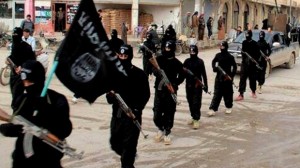Isil is losing ground on both digital and real battlefield. Here’s why
 Here’s a bit of pre-Christmas cheer. Isil is losing ground. Literally and figuratively. So says The Economist anyway. It points to the loss of the Iraqi town of Sinjar, the capture by Kurdish forces in Syria of oilfields west of Sinjar. The Iraqi city of Ramadi looks set to fall. Coalition strikes killed Abu Salah, the Islamic State’s financial minister in late November, according to US military spokesman Col. Steve Warren. He said on Thursday, Dec 10 that Salah was the third ISIS number cruncher killed in as many months. And most significantly of all, it’s starting to fail on the propaganda front, according to Aaron Zelin, a fellow at King’s College London, simply because it’s uploading fewer pictures in media releases.
Here’s a bit of pre-Christmas cheer. Isil is losing ground. Literally and figuratively. So says The Economist anyway. It points to the loss of the Iraqi town of Sinjar, the capture by Kurdish forces in Syria of oilfields west of Sinjar. The Iraqi city of Ramadi looks set to fall. Coalition strikes killed Abu Salah, the Islamic State’s financial minister in late November, according to US military spokesman Col. Steve Warren. He said on Thursday, Dec 10 that Salah was the third ISIS number cruncher killed in as many months. And most significantly of all, it’s starting to fail on the propaganda front, according to Aaron Zelin, a fellow at King’s College London, simply because it’s uploading fewer pictures in media releases.
All of these are key developments. Losing Sinjar makes the journey between Isil’s main cities, Mosul in Iraq and Raqqa in Syria, longer and more perilous. The capture of the oilfields will affect Isil’s revenue stream. Ramadi is a big city and its loss would be significant. And the death of a senior Isil figure has to affect morale. But it is the propaganda battlefield that may be truly decisive.
Mr Zelin has tabulated the number of pictures posted online by Isil and says they peaked midsummer. He also says the production quality of propaganda material has fallen. I find that hard to believe considering Isil’s latest online video was a simply chilling game of hide-and-seek among young boys in the ruins of a Deir Ezzor castle. Each is meant to find a prisoner and execute them at close range.
Anyway, The Economist also discerns a substantial change in Isil’s presence on the internet because of western government insistence that social media groups take more responsibility for terrorism-related content. “As a sign of its growing isolation on the internet, IS announced shortly after the Paris attacks that it would shift its propaganda archive to the ‘dark web’, a hard-to-trace part of the internet largely inaccessible to ordinary web browsers,” writes The Economist.
There you go then. Small steps on the digital and real battlefield.

